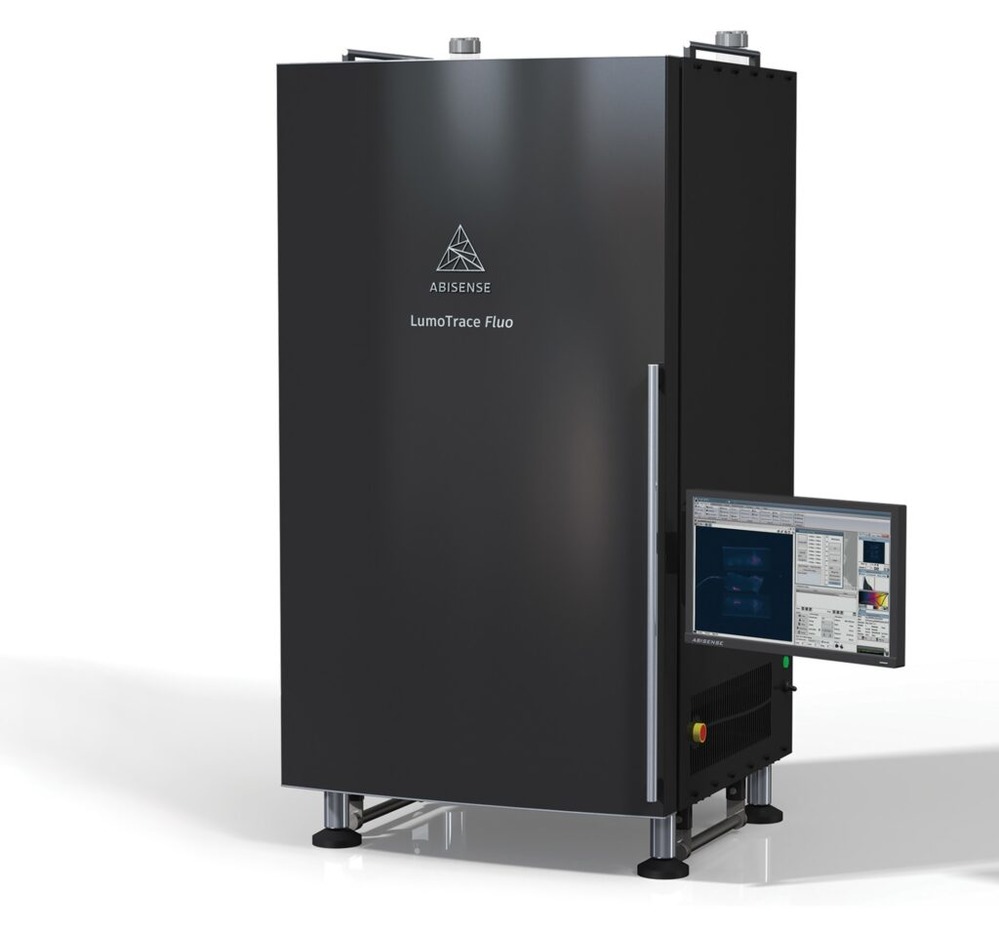Catalog
Search
438 products
View:
- Selected: 1Areas of use
- Selected: 0Item names
- Selected: 0Manufacturer
- Selected: 0Made in
- Selected: 0Additional
View:
438 products
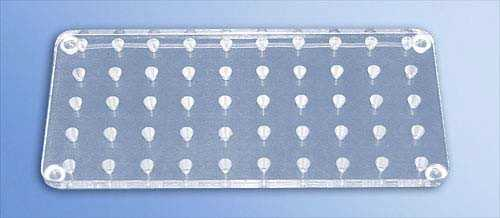
Test tube stand "Workplace" 50 hole positions for 0.5 ml test tubes, art. SG‐050‐05
from
576 ₽
The use of the test tube stand "Workplace" allows you to properly and conveniently organize the space for working with 0.5 ml test tubes.
For 0.5 ml test tubes
50 holes: 5 rows of 10 holes
Made of plexiglass
The conical shape of the holes ensures reliable fixation of the test tubes
Rubber feet keep the test tube stand from sliding on benchtop
Size 210*100*8
SkyGen
Moscow
Produced in: Moscow
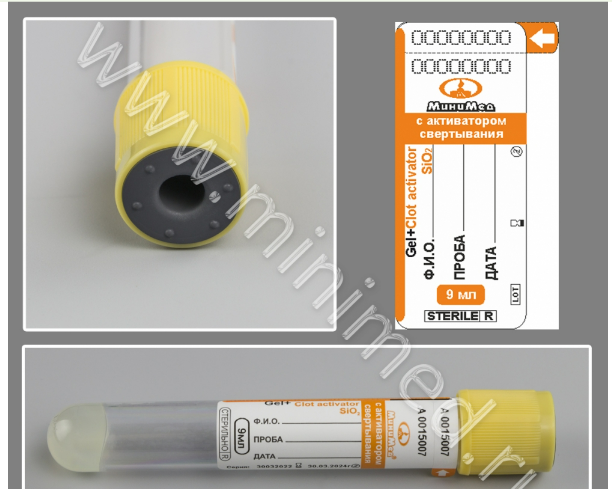
Vacuum tube MiniMed with coagulation activator and separation gel, 9ml,16*100 mm, yellow-orange, PET,pack.100 pcs.
from
1 056 ₽
Test tubes are used for blood sampling in biochemistry and immunology. During centrifugation, the gel forms a strong barrier for 48 hours between the clot and the serum. The gel tubes must be centrifuged no later than 2 hours after blood collection.
Material for research............... blood serum
Scope of application............................ serum research in biochemistry, immunology
Centrifugation.............................. 1500-2000 g - 10 minutes
MiniMed
Suponevo
Produced in: Bryansk region
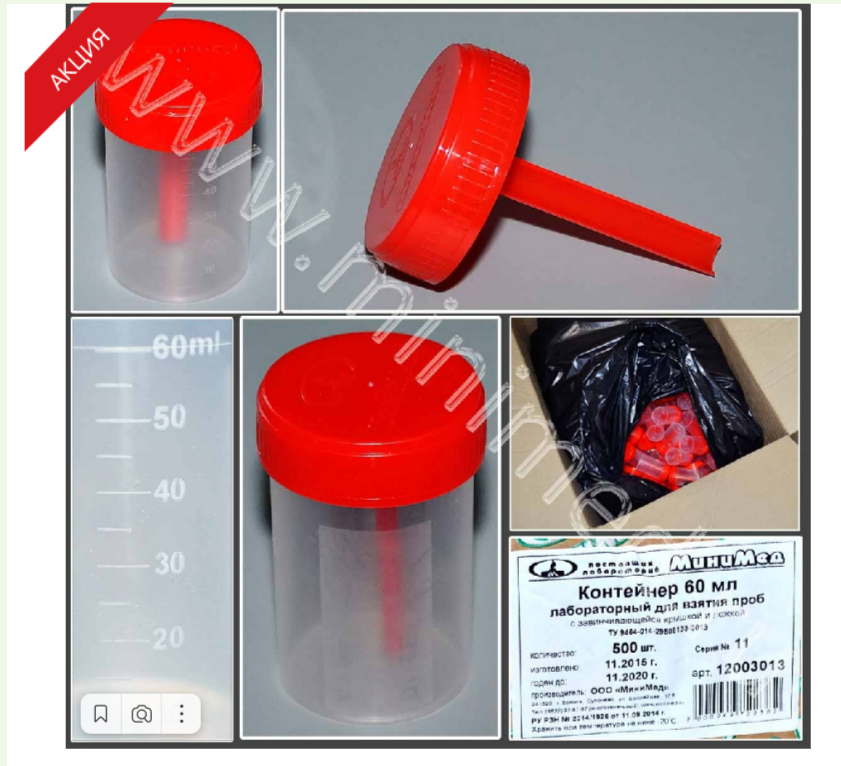
Laboratory container for sampling according to TU 9464-014-29508133-2013, 60 ml with screw. roofs. and a spoon, n/erased., n/a, cor.500pcs
from
2 150 ₽
Provides complete tightness during transportation of biological material. The material of the container is polypropylene, the lids and spoons are polyethylene. It has a graduated and frosted window for recording. Non-sterile.
MiniMed
Suponevo
Produced in: Bryansk region
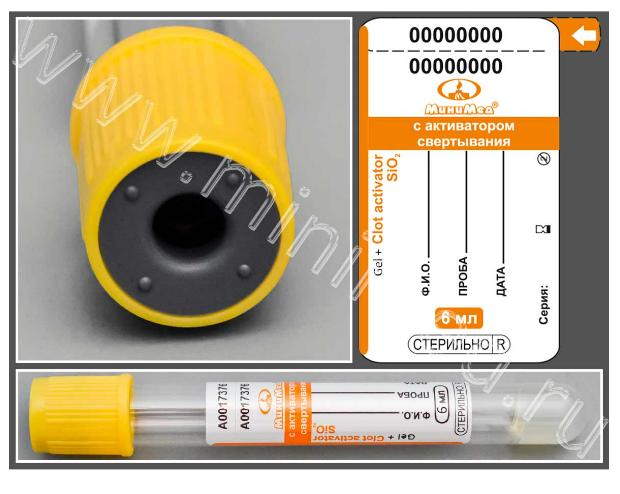
MiniMed vacuum tube with coagulation activator and separation gel, 6 ml, 13*100 mm, yellow-orange, PET, pack of 100 pcs
from
1 210 ₽
Test tubes are used for blood sampling in biochemistry and immunology. During centrifugation, the gel forms a strong barrier for 48 hours between the clot and the serum. The gel tubes must be centrifuged no later than 2 hours after blood collection.
Research material............... blood serum
Scope of application............................ serum research in biochemistry, immunology
Centrifugation.............................. 1500-2000 g - 10 minutes
MiniMed
Suponevo
Produced in: Bryansk region
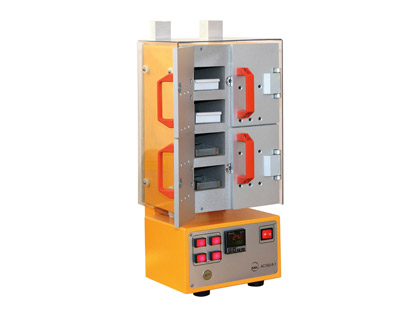
Measuring air-thermal installation ASESH-8-1
1 supp.
A thermogravimetric (air-thermal) method for determining the mass fraction of moisture is implemented, based on measuring the mass of the sample of the analyzed substance before and after drying, followed by calculating the values of the mass fraction of moisture.
Air-thermal measuring installations ASESH-8 are registered in the State Register of Measuring Instruments under No.58526-14, have a certificate of approval of the type of measuring instruments RU.C.31.005 And No. 56847. The installations undergo initial verification and have the appropriate certificate.
GENERAL CHARACTERISTICS
1. Convenient access to the cells of the drying chamber
On the front side of the cabinet there are four doors for access to the cells.
2. The possibility of simultaneous determination of the humidity of 8 samples
The drying chamber of the air-heat installation consists of 8 independent cells with a total capacity of 16 bucs.
3. Built-in timer
The ASESH-8-1 installation has 4 timers, by means of which the end of the drying process is monitored in each section with the output of an audible signal and a light indication.
4. Natural ventilation
The absence of rotating elements ensures absolute noiselessness of operation and a long service life.
SCOPE OF APPLICATION:
1. Crop production, agriculture and forestry.
2. Products of meat, dairy, fish, flour-milling, feed and microbiological industries.
3. Food industry products.
4. Cellulose, paper, cardboard and products made from them.
5. Medicines, chemical and pharmaceutical products and medical products.
6. Building materials.
7. Products of the logging and sawmilling and woodworking industry.
8. Soils, пground, mineral fertilizers.
GK EKAN
Saint Petersburg
Produced in: Saint Petersburg

Vacuum tube MiniMed with sodium heparin, 4 ml, 13×100 mm, green, PET, pack.100 pcs,
from
804 ₽
Test tubes are used to count blood cells and study plasma parameters. When mixed with the collected material, heparin blocks the activity of thrombin and inhibits the transition of soluble fibrinogen to insoluble fibrin, inactivating irreversible clotting factors.
Material for research............... heparinized blood, plasma
Scope of application............................ immunology, hematology
Centrifugation................................ 1000 - 1500 g - 10 minutes
MiniMed
Suponevo
Produced in: Bryansk region
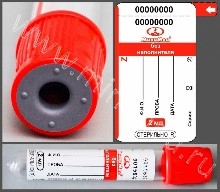
Vacuum tube MiniMed without filler, 2 ml, 13×75 mm, red, glass, pack.100 pcs
from
915 ₽
Tubes without fillers are used for the study of blood serum in biochemical, immunological and serological tests.
Research material............... blood serum
Scope of application............................ blood serum research in biochemistry, immunology, serology
Centrifugation................................ 1000 - 1500 g - 10 minutes
MiniMed
Suponevo
Produced in: Bryansk region
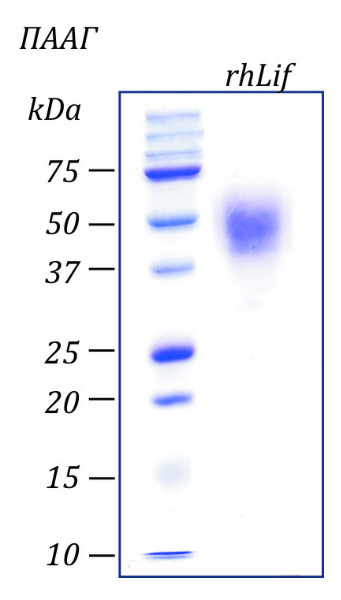
rhLif
from
18 000 ₽
Leukemiainhibitoryfactor (LIF), also known as differentiation stimulating factor (D factor) or melanoma-derived LPL inhibitor (MLPLI). LIF is involved in the regulation of hematopoiesis, bone metabolism, neurodevelopment, and inflammation.
SajStorLab
Moscow
Produced in: Moscow
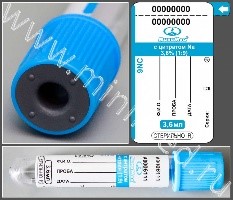
Vacuum tube MiniMed with sodium citrate 3.8%, 3.6 ml,13*75 mm, blue, PET,pack.100 pcs,
from
693 ₽
The test tubes contain a buffer solution of sodium citrate, which is an anticoagulant. The ratio of citrate to the amount of blood taken is 1:9.
Material for research............... citrate plasma, blood
Scope of application............................ coagulation study
Centrifugation................................ 2000 - 2500 g - 10-15 minutes
MiniMed
Suponevo
Produced in: Bryansk region

Vacuum tube MiniMed with K2-EDTA and separation gel, 4 ml, 13×100mm, purple, glass, pack.100 pcs,
from
1 339 ₽
The potassium salt of ethylenediaminetetraacetic acid (EDTA) is the preferred anticoagulant for hematological studies. Gel is a special material designed to form a stable barrier between the cellular components of blood and serum during centrifugation.
Material for research............... EDTA-blood, plasma
Scope of application............................ hematological examination of whole blood
MiniMed
Suponevo
Produced in: Bryansk region
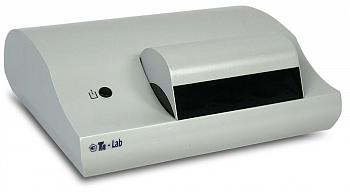
TA-Lab Voltammetric Analyzer
Automated device for measuring the content of toxic trace elements (As, Cd, Pb, Cu, Zn, Mn, Hg, Se, I, Ni, Co, Fe, Ag, Sb, Bi, Fe, Sn) in water, soil, food products by voltammetric methods with sensitivity at 1/10 of the permissible level (MPC) and below.
TOMANALIT
Tomsk
Produced in: Tomsk

Vacuum tube MiniMed with K3-EDTA and separation gel, 9 ml, 16×100mm, purple, PET, pack.100 pcs
from
1 710 ₽
The potassium salt of ethylenediaminetetraacetic acid (EDTA) is the preferred anticoagulant for hematological studies. Gel is a special material designed to form a stable barrier between the cellular components of blood and serum during centrifugation.
Material for research............... EDTA-blood, plasma
Scope of application............................ hematological examination of whole blood
MiniMed
Suponevo
Produced in: Bryansk region
